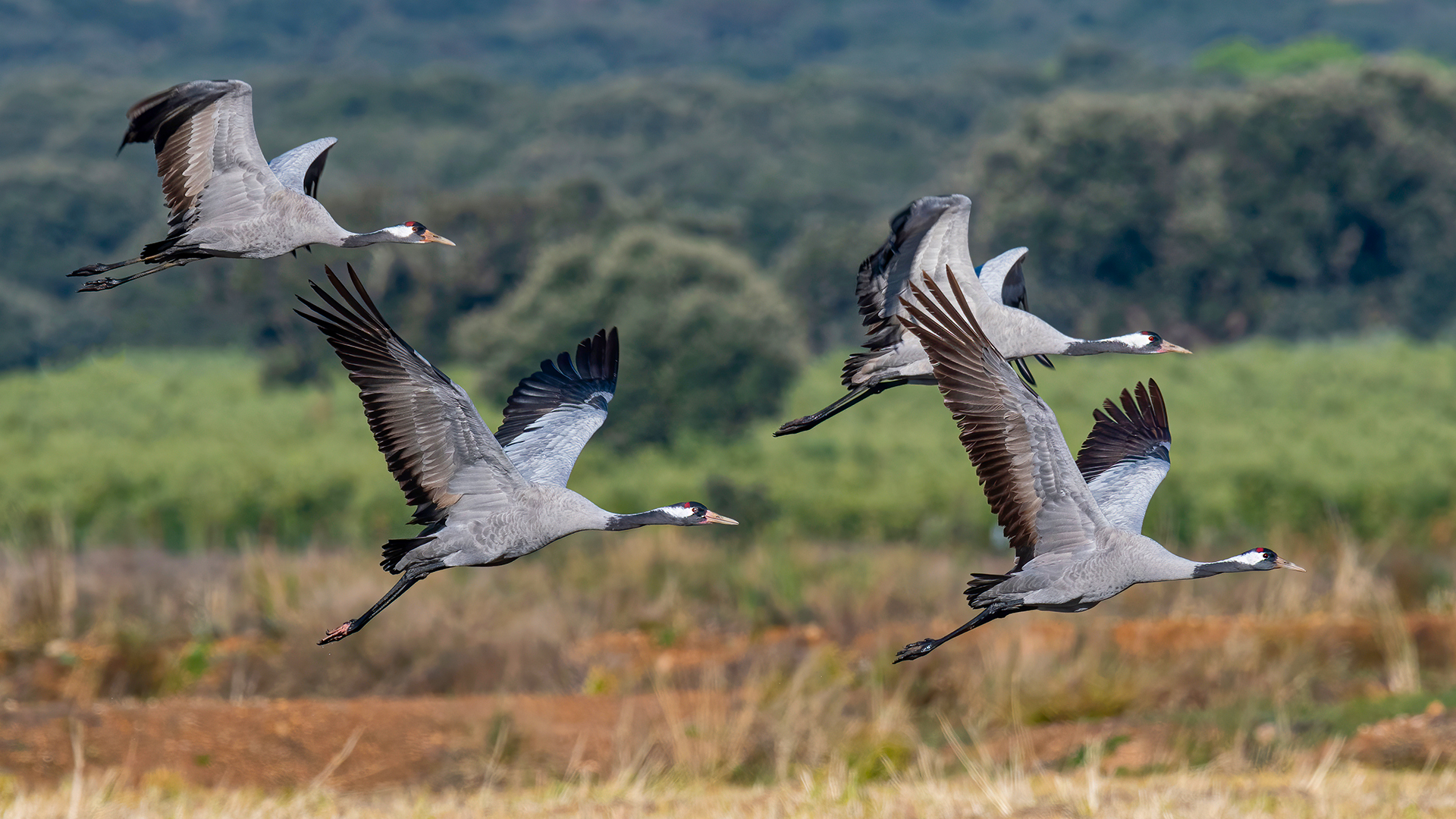Without GPS or a built-in compass, migratory birds repeat their magnificent flights year after year. They look for warmer countries where they live temporarily during the cold months in their home countries. In Portugal, these species find one of the perfect habitats for nesting in forests. Get to know them a little better in this World Migratory Bird Day.
The second Saturday of May and October is World Migratory Bird Day and is celebrated precisely in those times of the year when these birds engage in their fantastic journeys. How they manage to guide themselves is not yet fully known, but there is already some information about what triggers their “GPS”. And if the “how” still raises some doubts, the “why” is now more clear: they seek refuge from the cold, the weather and what it might cause: food shortage.
The behaviour of migratory birds is still the object of both study and astonishment. One of the most interesting topics is to understand how birds decide when it’s time to leave. Experts found out that, in order to leave, migratory birds wait for several clues: when the days become shorter, it is a great sign that it is high time to look for more pleasant places, but other indicators that trigger the journey have also been identified, such as when they feel changes in atmospheric pressure and decreased food availability.
Due to the mild climate, Portugal is a staging point for many migratory birds that arrive in the spring, nest here and leave again when autumn comes to their place of origin, usually sub-Saharan Africa. The national territory is, therefore, a privileged spot to watch these migratory birds during both times of the year.
But whereas species such as the swallow, of the Hirundinidae family, and the black stork (Ciconia nigra) that we see in the Portuguese skies from February onwards and which build their nests arrive from North Africa and breed here until the coolest time, others arrive from the North in search of refuge. See for example species such as the common crane (Grus grus), coming from Eurasia, and the northern lapwing (Vanellus vanellus), coming from northern Europe.
Another issue that stands out when talking about migratory birds is the distance that these birds can travel to reach their destination. A new record holder entered the Guinness Book of World Records in early 2023: a small bar-tailed godwit (Limosa lapponica), identified with the number 234684, a species that weighs, on average, 290 grams, flew 13,560 kilometres, almost a third of the circumference of planet Earth, without stopping to feed or rest. The astonishing journey began in Alaska and only ended in the Australian state of Tasmania. It was possible to follow this trip thanks to a 5G satellite device that proves that its long-haul flight started on October 13, 2022 and ended 11 days later.
Also the Arctic sea tern, or Arctic tern, (Sterna paradisaea) usually makes headlines for its long flights. With a wing span of 64 to 76 centimetres, it can fly from one pole to the other, from the Arctic to the Antarctic, flying 40,000 kilometres (the equivalent of just under the circumference of the Earth).




